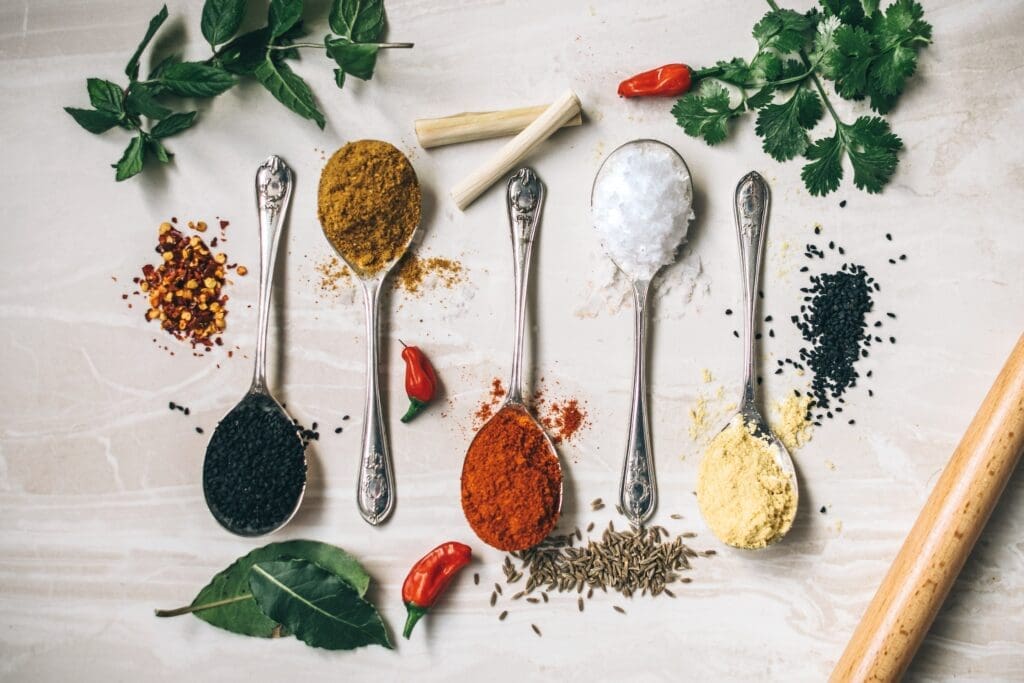Satvik, Rajsik, and Tamsik Diets and Nutrition
Ayurveda, the ancient wisdom of life from India, holds the secrets to nurturing a well-balanced mind, body, and spirit through the art of mindful eating. This blog post will unveil the principles of three distinctive Ayurvedic diets—Satvik, Rajsik, and Tamsik—helping you to tailor your nutritional intake to better support your health and vitality.
What is an Ayurvedic Diet?
The Ayurvedic diet emphasizes the profound interconnection between our body and the foods we eat. According to Ayurveda, every individual carries a unique blend of the three doshas—Vata (air and ether), Pitta (fire and water), and Kapha (earth and water). These doshas govern our physiological activities, mental attributes, and overall health. The Ayurveda diet facilitates the balancing of these doshas through conscious dietary choices, ensuring harmony and vitality.
Ayurveda and Its Principles
The principles of Ayurvedic nutrition consider not only what you eat, but how, when, and why you eat. This ancient system encourages mindful consumption of whole foods, highlighting the benefits of freshly prepared meals, a variety of flavors, and seasonal eating.
Benefits of Following an Ayurvedic Diet
An Ayurvedic diet provides a roadmap to better health, offering benefits such as improved digestion, enhanced energy, balanced emotions, weight management, and strengthened immunity. Embracing these principles can revolutionize your relationship with food, transforming it from a mere necessity into a healing tool.
Ayurvedic Medicine and Its Role in Diet
In Ayurvedic medicine, diet plays a pivotal role in preventing and treating diseases. The digestive fire, or Agni, is considered a life force. An Ayurvedic diet aims to nourish and balance Agni, enabling it to efficiently break down and assimilate nutrients, thereby optimizing health.
How to Determine Your Dosha
Determining your dominant dosha involves understanding your physical characteristics, emotional tendencies, and lifestyle preferences. To uncover your unique Ayurvedic constitution, consider consulting an Ayurvedic practitioner or taking an online quiz like this one.
How Dosha Influences Your Dietary Choices
Your dominant dosha directly influences the types of foods that nurture or imbalance your system. For example, a person with a dominant Vata dosha might require grounding foods like root vegetables, nuts, and seeds, while a Pitta individual might thrive on cooling foods such as fruits and legumes.
What Foods Should You Eat on an Ayurvedic Diet?
Depending on your dosha, the list of foods to eat will vary. However, an Ayurvedic diet emphasizes fresh, whole foods, and recommends minimizing processed foods.
Foods Recommended for Vata Dosha
For those with a dominant Vata dosha, warm, cooked foods like root vegetables, nuts, and seeds are encouraged. Healthy fats and sweet fruits can also balance Vata.
Foods Recommended for Pitta Dosha
For Pitta individuals, cooling foods like cucumbers, sweet fruits, and legumes are ideal. They should also consume ample greens and avoid spicy and fried foods.
Foods Recommended for Kapha Dosha
Kapha individuals do well with light, warm foods like cooked greens and legumes. They should reduce the intake of sweet, salty, and oily foods.

Food Combining Principles in Ayurveda
In Ayurveda, certain foods are believed to digest well together, while others do not. For example, fruit is recommended to be eaten alone, and milk is not to be combined with sour or citrus items. These principles support optimal digestion and nutrient absorption.
Role of Spices in Ayurvedic Cooking
Ayurveda recommends a variety of spices to stoke the digestive fire and enhance the nutritional value of foods. Spices like turmeric, cumin, coriander, and fennel are commonly used.

How Can an Ayurvedic Diet Improve Your Overall Health and Vitality?
Through conscious eating, an Ayurvedic diet may enhance digestion, stimulate metabolism, and promote detoxification, leading to improved energy levels, balanced emotions, and a fortified immune system.
Impact of Ayurvedic Dietary Changes on Digestion
The Ayurvedic diet aids digestion by recommending specific foods and food combinations that stoke the digestive fire, encouraging efficient breakdown and assimilation of nutrients.
Understanding Mindful Eating in Ayurveda
Ayurveda encourages a conscious, mindful approach to eating, promoting the idea of fully focusing on your meal, eating at a moderate pace, and appreciating the tastes, textures, and aromas of your food.
How an Ayurvedic Diet Supports Wellness
An Ayurvedic diet emphasizes the importance of eating for your dosha. By choosing dosha-balancing foods, you support your body’s natural healing processes, contribute to emotional balance, and foster overall wellness.
Ayurvedic Lifestyle Principles for Optimal Health
In addition to dietary guidelines, Ayurvedic lifestyle principles include regular exercise, proper sleep, daily routines, and meditation practices—all of which contribute to optimal health and vitality.
Meal Timing and Largest Meal of the Day in Ayurveda
According to Ayurvedic wisdom, the largest meal of the day should be lunch when the digestive fire is at its peak. Regular meal timings and mindful eating habits also support better digestion and absorption of nutrients.

What Are Some Ayurvedic Recipes to Try?
Ayurveda offers a rich repertoire of recipes tailored for each dosha. Satvik recipes promote balance and clarity, Rajsik recipes fuel activity and energy, and Tamsik recipes provide grounding and stability. For an array of Ayurvedic recipes, you can explore this comprehensive recipe guide.
How to Incorporate Ayurvedic Eating Principles into Your Lifestyle?
You can incorporate Ayurvedic principles into your lifestyle by understanding the role of food in balancing your body and mind, making dietary changes based on your dominant dosha, practicing mindful eating, and adhering to meal timings and portion control guidelines.
What Foods Should You Avoid on an Ayurvedic Diet?
Just as certain foods nurture each dosha, others can disrupt their balance.
Foods to Avoid for Vata Dosha
Vata individuals should limit raw, cold, and dry foods as they can exacerbate Vata imbalances.
Foods to Avoid for Pitta Dosha
Pitta individuals should avoid hot, spicy foods and limit their intake of alcohol and caffeine, which can aggravate Pitta.
Foods to Avoid for Kapha Dosha
Kapha individuals should reduce the intake of heavy, oily, and sweet foods, as these can lead to Kapha imbalances.
Remember, transitioning to an Ayurvedic diet should be a gradual process, guided by self-awareness and mindfulness. When in doubt, consult an Ayurvedic practitioner or nutritionist to get personalized advice. With commitment and patience, you will be rewarded with a stronger, healthier, and more vibrant you—the essence of true Nirvana.
Note: This article is for educational purposes only. It’s not intended to replace medical advice or diagnosis from a qualified healthcare professional.
Conclusion
Satvik, Rajsik, and Tamsik diets provide different perspectives on nutrition and offer unique ways to maintain physical, mental, and spiritual well-being. While the Satvik diet emphasizes purity and tranquility, the Rajsik diet fuels ambition and the Tamsik diet highlights the importance of avoiding harmful foods. By understanding the principles and effects of these diets, individuals can make informed choices and create a balanced approach to Ayurvedic nutrition that suits their lifestyles and goals.
FAQ
Q1: What is Satwik, Rajasik, and Tamasic diet? A: Satwik, Rajasik, and Tamasic diets are categorizations based on Ayurvedic principles. Satwik diet promotes purity and balance, the Rajasik diet stimulates energy and ambition, while the Tamasic diet emphasizes inertia and darkness.
Q2: What is the difference between Satvik food and Tamsik food? A: Satvik food promotes clarity and tranquility, while Tamsik food is heavy, processed, and lacks vitality. Satvik food nourishes the body and mind, while Tamsik food can lead to lethargy and negative emotions.
Q3: What is the Tamasik diet? A: The Tamasik diet consists of heavy, processed, and unhealthy foods that are believed to promote inertia, darkness, and negative qualities in the mind and body.
Q4: What are Rajasik foods? A: Rajasik foods are moderately spicy and stimulating. They fuel ambition, action, and desire. These foods provide energy but should be consumed in moderation to maintain balance.
Q5: Is milk a Tamsik? A: No, milk is not considered Tamsik. Milk is often associated with Satvik qualities as it is believed to promote purity, nourishment, and vitality.
Q6: What are the 4 Satvic food principles? A: The four Satvic food principles are:
- Ahimsa (non-violence): Avoiding harm to living beings.
- Saatvikta (purity): Consuming pure, fresh, and natural foods.
- Sattva (balance): Promoting mental clarity and tranquility.
- Prana (life force): Choosing foods that have vital energy and promote vitality.
Q7: Why is onion considered a Tamsik food? A: Onion is believed to have Tamsik properties as it is considered heavy, difficult to digest, and can stimulate negative emotions and lethargy when consumed in excess.
Q8: How do you reduce Tamasik? A: To reduce Tamasik’s qualities, one can focus on consuming more Satvik and Rajasik foods that promote clarity, energy, and balance. Additionally, practicing mindfulness, meditation, and engaging in positive activities can help reduce Tamasik influences.
Q9: Is milk considered a Tamasik food? A: No, milk is not considered Tamasik. In Ayurveda, milk is often regarded as Satvik as it is believed to have nourishing and vitalizing properties.
Q10: What are the disadvantages of Tamasik food? A: Tamasik food, when consumed excessively, can lead to lethargy, weight gain, digestive issues, and imbalances in the mind and body. It may also promote negative emotions and a dull mental state.
Q11: What are three Tamasic foods? A: Three examples of Tamasic foods are heavily processed foods, deep-fried snacks, and foods with excessive spices and stimulants.





















